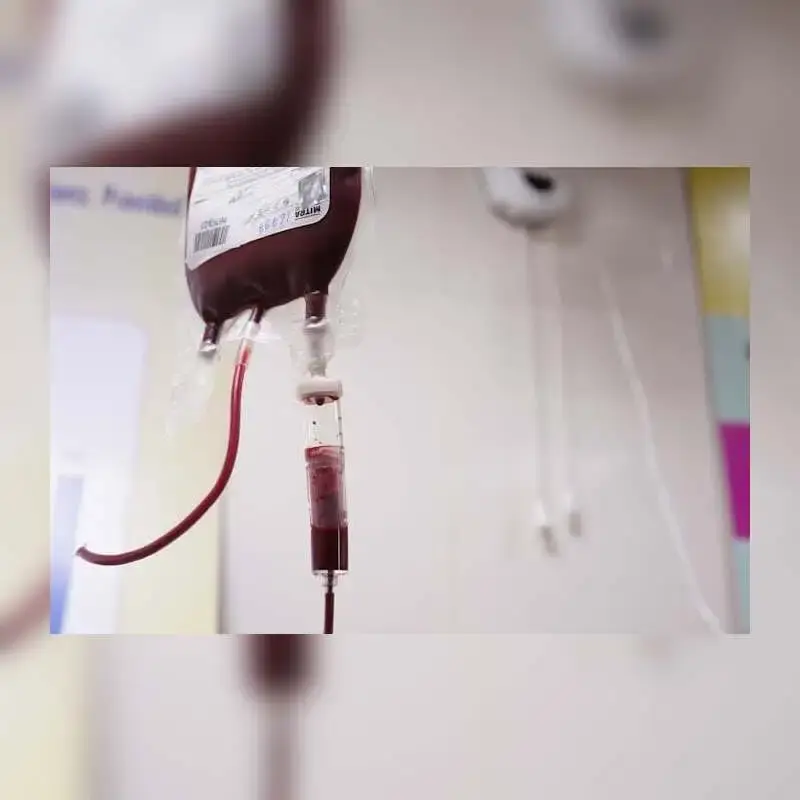Blood Donation in Kenya: Why We Face Shortages and How You Can Help
- by Diana Ndanu
- 09 April, 2025
- 0 Comments
- 6 Mins



Introduction
Let’s Talk About Blood – And Why It’s a Big Deal
If you’ve ever had a loved one in surgery, a friend injured in an accident, or know someone managing a chronic illness like sickle cell disease, you know how vital blood can be. But here’s the shocking part: Kenya doesn’t have enough blood to meet the country’s demand.
Every year, thousands of lives are put at risk because of blood shortages in Kenya. From major hospitals in Nairobi to small clinics in rural counties, the story is the same: “We need blood – urgently.”
So what’s really going on? Why does a country with over 50 million people struggle to get enough blood? Let’s dive in.
The Numbers Behind the Blood Shortage
According to the Kenya National Blood Transfusion Service (KNBTS), the country needs at least 500,000 units of blood annually. But in recent years, Kenya has only been collecting less than half of that – around 200,000 to 250,000 units.
That gap is huge. And it’s not just about numbers — it’s about real people who need transfusions and often can't get them in time.
Think of:
- Mothers facing complications during childbirth
- Children suffering from severe anemia or malaria
- Cancer patients needing regular transfusions
- Road accident victims losing blood fast
Why Are We Not Donating Enough Blood?
1. Low Awareness and Misconceptions
Many Kenyans simply don’t know how, where, or why they should donate blood. Some still believe old myths like:
- "If I donate blood, I’ll become weak"
- "I need to be paid to donate"
- "I must eat meat before donating" These beliefs keep potential donors away.
2. Lack of Consistent Blood Drives
Gone are the days when high schools and universities, once a huge source of blood, ran regular donation drives. With changing school policies and COVID-19 disruptions, many drives stopped — and haven’t resumed fully.
3. No National Incentive System
In countries like Rwanda or South Africa, repeat donors get recognition, small rewards, or even free health checkups. In Kenya, there’s little motivation beyond goodwill.
4. Blood Collection Centers Are Few and Far Between
Not every town or even every hospital has a licensed blood donation center. In rural areas, some people would have to travel long distances just to donate blood — which discourages them.
The Blood Banking System in Kenya – What’s Not Working?
Fragmented and Underfunded
The Kenya National Blood Transfusion Service (KNBTS) has historically depended on external donors, especially the U.S. government through PEPFAR. But funding cuts in recent years left a huge hole in operations.
This has led to:
- Shortages of blood bags and testing kits
- Delays in screening and distribution
- Limited mobile blood drives
- Poor Storage and Logistics
- Even when blood is collected, getting it safely to patients is another challenge. Many hospitals lack reliable cold-chain systems to preserve donated blood, especially in remote counties. There are also limited testing labs, which slows down processing.
Stories from the Ground: Real People, Real Impact
Mary, 26, Nakuru – Emergency C-Section Without Blood
> “I had just gone into labor, but my pressure shot up and the doctor said I needed an emergency operation. The problem? They didn’t have my blood type. My family had to scramble and bring donors from outside — and that took hours. I could have died.”
Joseph, 19, Kisumu – Sickle Cell Fighter
> “I need transfusions often because of my sickle cell. But sometimes we go to the hospital and they say, ‘No blood today.’ It’s scary. It feels like we’re forgotten.”
What Kenya Is Doing to Improve Blood Supply
Despite the hurdles, there’s hope. The Kenyan government and health partners are stepping up:
1. Establishment of the Kenya Tissue and Transplant Authority (KTTA)
This new agency is meant to manage and coordinate all matters related to human tissues and blood. The hope is that KTTA will modernize blood banking and improve distribution.
2. Digitizing the Blood System
There’s been talk of launching a national blood donor registry and digital tracking of blood units — which would improve accountability and prevent wastage.
3. County Governments Taking Charge
Devolution has allowed counties to set up their own donation drives and mini blood banks. Mombasa and Kisumu have led the way here.
4. Reviving School and University Drives
After the COVID-19 slow-down, schools and colleges are gradually restarting regular donation activities — and this is already making a difference.
What Can You Do? How to Donate Blood in Kenya
If you’re healthy, aged between 16 and 65, and weigh at least 50kg, you’re eligible to donate. It’s safe, simple, and takes about 30 minutes.
Where to Donate Blood in Kenya:
- KNBTS Centers (in Nairobi, Mombasa, Kisumu, Eldoret, Nakuru, and more)
- Major public hospitals
- During mobile blood drives in malls, universities, or county events
Want to know where the next blood drive is? Follow:
@kenyabloodbank on social media
Visit www.ktta.go.ke (Kenya Tissue and Transplant Authority)
Common Questions About Blood Donation in Kenya
1. Is it safe?
Absolutely. All needles are new and sterile, and you’ll be monitored throughout.
2. Will I feel weak?
Most people feel fine. Just rest, hydrate, and eat well before and after.
3. Can I donate if I’m on my period?
Yes! Menstruation does not affect your eligibility to donate blood.
4. How often can I donate?
Men can donate every 3 months; women every 4 months.
Blood Donation – A Hero’s Act That Costs You Nothing
Imagine this: Your small act of kindness — donating a pint of blood — could save up to three lives. Isn’t that amazing?
In Kenya, where supply is often short and demand is constant, blood donors are real-life heroes. They make the difference between life and death, every single day.
But we need more of them. We need you.
The Way Forward: What Needs to Change?
To truly solve Kenya’s blood shortage, it’s not just about asking people to donate. It’s about fixing the system too.
We need:
- Better funding for blood collection and storage
- More mobile blood drives, especially in rural areas
- Public awareness campaigns to educate and debunk myths
- A strong donor recognition program to encourage repeat donors
- Policy support at national and county levels
Final Thoughts
Kenya can overcome its blood supply challenges — but only if we all get involved. Whether you donate blood, organize a drive in your school or church, or simply spread awareness, your action matters.
Let’s stop the heartbreak of losing lives because of something so preventable. Let’s make donating blood part of our culture.
Be a donor. Be a lifesaver.
Want to find out when and where you can donate blood? Keep following us at HealthWithNdanu.co.ke for updates, donor stories, and more ways to get involved.
Got Your Own Experience? Share with us
Popular Categories
Most Visited Blogs
Daily Newsletter
Get all the top stories from Blogs to keep track.



